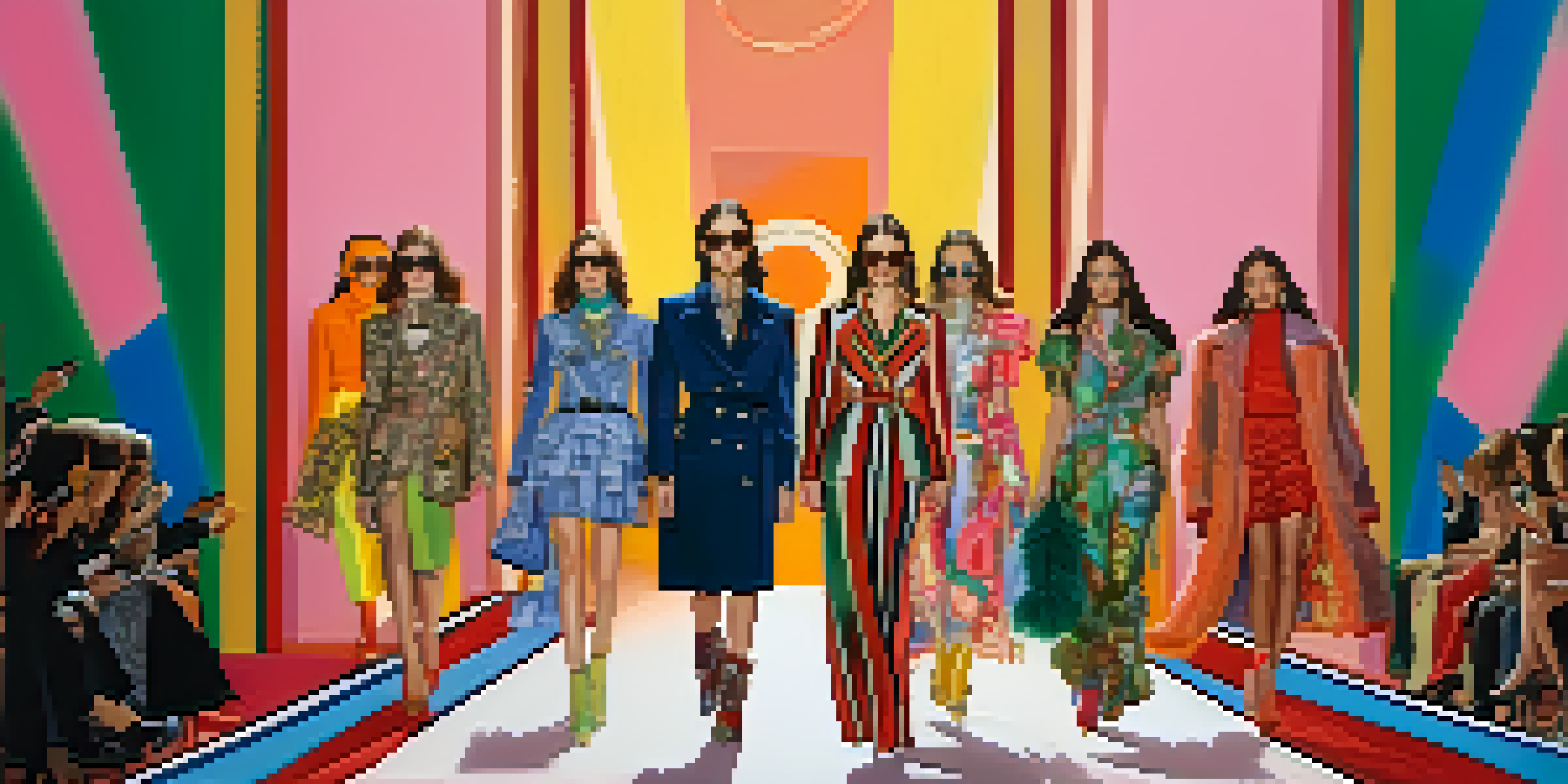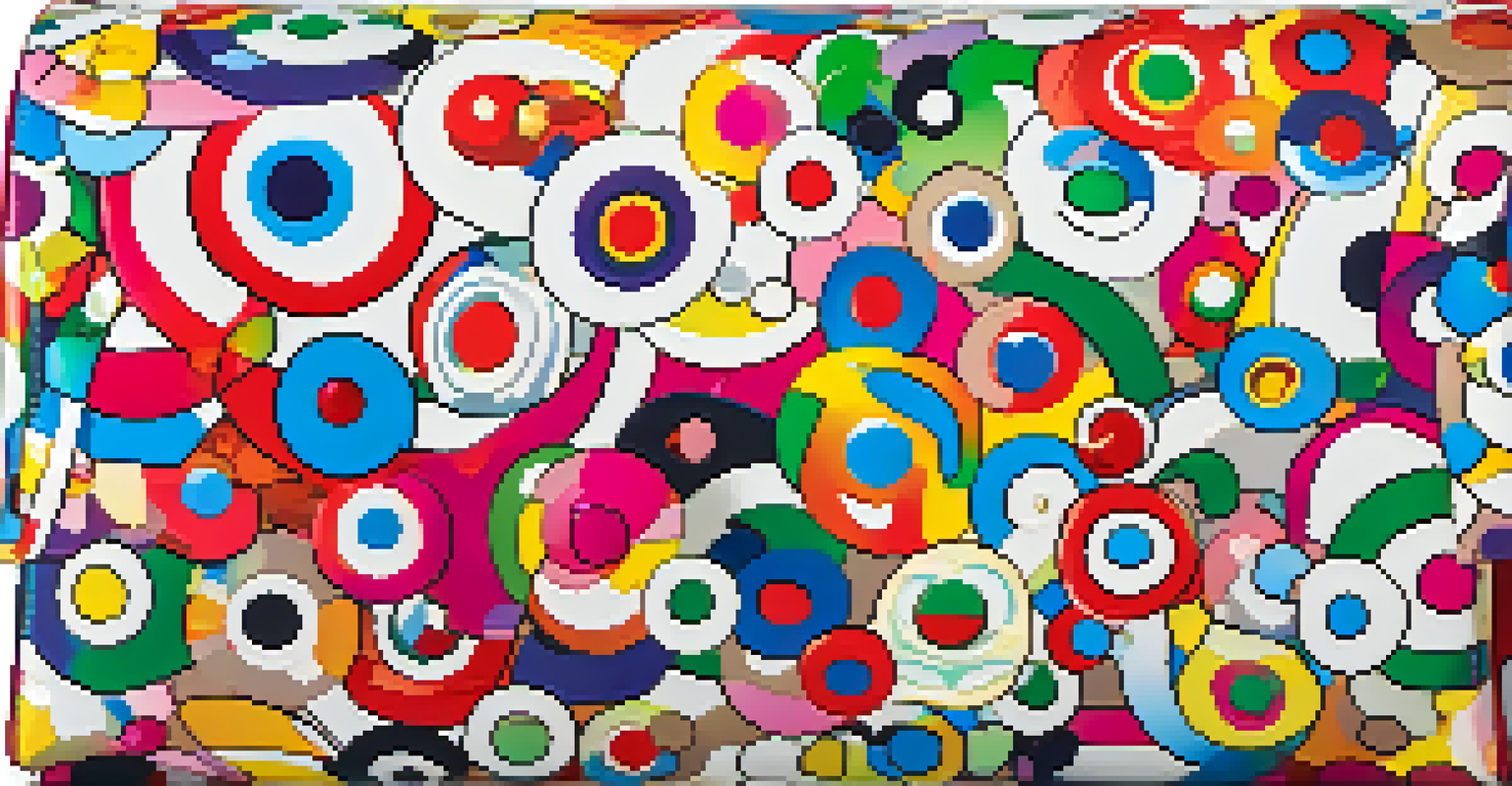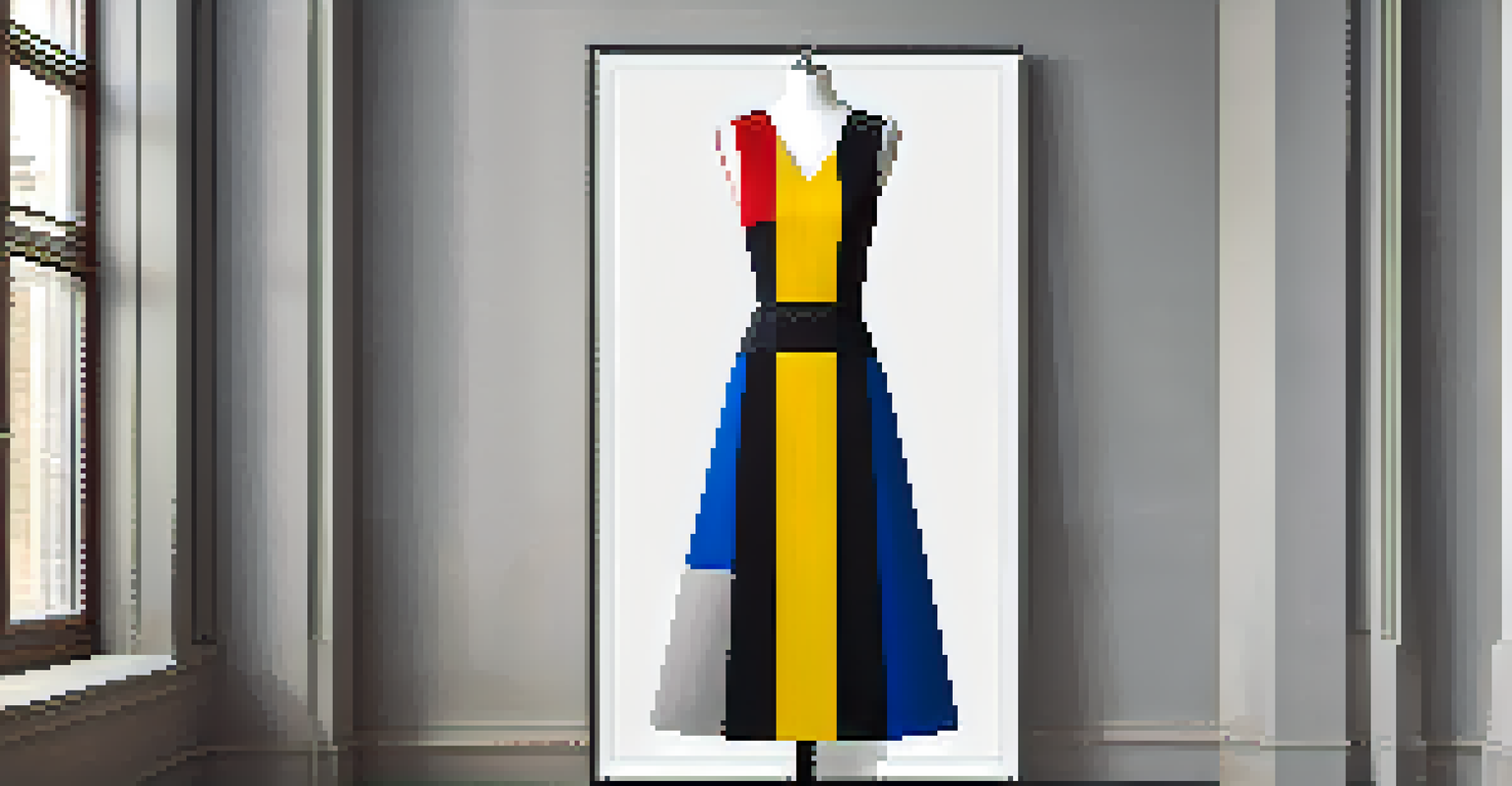Top 10 Iconic Collaborations Between Luxury Brands and Artists

Louis Vuitton and Takashi Murakami: A Colorful Revolution
In 2003, Louis Vuitton teamed up with Japanese artist Takashi Murakami, creating a stunning collection that fused high fashion with pop art. The collaboration featured Murakami's iconic Monogram Multicolore pattern, which transformed the classic LV monogram into a vibrant explosion of color. This partnership not only revitalized the brand’s image but also made luxury more accessible and relatable to a younger audience.
Fashion is the armor to survive the reality of everyday life.
Murakami’s playful approach to design brought a fresh perspective to Louis Vuitton, attracting attention from art enthusiasts and fashion lovers alike. The bags quickly became status symbols, showcasing that luxury could be both artistic and fun. This collaboration set a precedent for future partnerships between the fashion and art worlds.
Ultimately, the success of this collection demonstrated how a luxury brand could innovate while respecting its heritage. The boldness of both Louis Vuitton and Murakami redefined what luxury could mean, paving the way for future collaborations that continue to blur the lines between art and fashion.
Gucci and Alessandro Michele: Redefining Modern Elegance
When Alessandro Michele took the helm at Gucci, he introduced a whimsical blend of vintage and modern aesthetics, which quickly caught the art world’s attention. His designs often featured bold patterns and eclectic motifs that reflected a deep appreciation for art history. Michele's vision transformed Gucci into a cultural phenomenon, making it a canvas for artistic expression.

One of the standout collaborations was with contemporary artists like Ignasi Monreal, whose digital illustrations brought a contemporary twist to Gucci’s iconic designs. This partnership not only highlighted the brand’s innovative spirit but also created a dialogue between fashion and digital art. The result was collections that felt both timeless and timely.
Art-Fashion Collaborations Thrive
Partnerships between luxury brands and artists have redefined the boundaries of both industries, creating innovative and engaging collections.
Michele's approach shows how luxury brands can stay relevant by engaging with artists and embracing new forms of creativity. By intertwining art with fashion, Gucci has not only elevated its brand identity but also encouraged a more inclusive conversation about beauty and style in modern culture.
Chanel and Pablo Picasso: An Artistic Affair
Chanel's collaboration with Pablo Picasso in the early 20th century marked a significant moment in the intersection of fashion and fine art. The iconic designer admired Picasso's innovative spirit, leading to a partnership that celebrated artistic freedom and creativity. This relationship was more than just a business arrangement; it was a meeting of minds that pushed the boundaries of both art and fashion.
Art is not a thing; it is a way.
Through this collaboration, Chanel infused her collections with the boldness of Picasso's Cubist style, resulting in pieces that were both avant-garde and timeless. The designs reflected a shared vision of breaking away from tradition, which resonated with a generation eager for change. This synergy between the two artists sparked an artistic revolution that still influences fashion today.
Chanel and Picasso's partnership is a reminder of how influential collaborations can reshape industries. Their shared commitment to innovation and artistry paved the way for a more integrated approach to fashion design, inspiring countless artists and designers who followed in their footsteps.
Yves Saint Laurent and Piet Mondrian: A Masterpiece on Fabric
In 1965, Yves Saint Laurent launched a collection inspired by the works of Dutch painter Piet Mondrian, famously known for his abstract geometric patterns. This collaboration resulted in the iconic Mondrian dress, which transformed a simple silhouette into a vibrant canvas of color and form. The dress not only showcased the beauty of art but also highlighted fashion's ability to elevate and reinterpret artistic movements.
Saint Laurent's genius lay in his ability to translate Mondrian’s complex compositions into wearable art. The collection was groundbreaking, as it challenged traditional notions of fashion and solidified the idea that clothing could be a form of artistic expression. This collaboration opened the door for future designers to explore the relationship between art and fashion.
Luxury Meets Modern Aesthetics
Designers are increasingly blending contemporary art influences with traditional luxury elements, appealing to diverse and younger audiences.
The Mondrian dress remains a symbol of innovation in the fashion world, exemplifying how a luxury brand can successfully incorporate fine art into its designs. This partnership not only celebrated Mondrian’s legacy but also reinforced Saint Laurent's position as a visionary designer who pushed boundaries and redefined elegance.
Dior and Andy Warhol: The Art of Fashion Meets Pop Art
The collaboration between Dior and pop artist Andy Warhol in the 1980s brought a vibrant energy to the world of luxury fashion. Warhol, known for his bold, colorful style, created a series of designs that played with the concept of celebrity culture and consumerism. This partnership redefined the aesthetics of luxury, blending high fashion with the playful irreverence of pop art.
Warhol’s designs for Dior featured iconic motifs and a sense of whimsy that appealed to a broader audience. By embracing the art of commercialism, Dior managed to attract a new generation of fashion enthusiasts eager for something fresh and exciting. This collaboration emphasized that luxury could be both sophisticated and fun, breaking away from traditional constraints.
Ultimately, the partnership between Dior and Warhol highlighted the power of collaboration in the fashion industry. By merging art and fashion, they created pieces that resonated with the zeitgeist, reminding us that creativity knows no boundaries and can thrive in unexpected places.
Prada and Francesco Vezzoli: A Tribute to Cinema
Prada's collaboration with Italian artist Francesco Vezzoli took a unique approach by blending fashion with cinematic art. This partnership was characterized by a series of collections that paid homage to classic films, incorporating elements of nostalgia and glamour. Vezzoli's artistic vision brought a refreshing narrative to Prada's designs, making each piece a tribute to the power of storytelling.
The collaboration resulted in striking visuals that blurred the lines between art and fashion, captivating audiences and critics alike. By drawing inspiration from cinema, Prada created a dialogue that resonated with both fashion lovers and film buffs. This innovative approach showcased how luxury brands could explore different art forms, creating a richer cultural experience.
Legacy of Creative Partnerships
Successful collaborations leave a lasting impact on fashion brands, shaping their identity and setting new standards for future creativity.
Through this partnership, Prada demonstrated that fashion is more than just clothing; it’s a medium for artistic expression. The fusion of Vezzoli's cinematic inspiration with Prada's craftsmanship produced collections that were not only visually stunning but also thought-provoking, reinforcing the idea that art and fashion can coexist beautifully.
Burberry and Vivienne Westwood: Punk Meets Luxury
The collaboration between Burberry and Vivienne Westwood brought the rebellious spirit of punk fashion into the realm of luxury. Westwood, known for her edgy designs and punk aesthetic, infused classic Burberry pieces with a daring twist. This partnership showcased how traditional luxury brands could evolve and embrace new influences without losing their identity.
This collaboration introduced unique designs, such as the iconic Burberry trench coat adorned with Westwood's punk-inspired graphics. By merging high fashion with street style, the partnership captured the essence of contemporary culture and appealed to a younger, more diverse audience. This bold move demonstrated that luxury could be both refined and irreverent.

Burberry and Westwood's collaboration highlighted the importance of innovation in the fashion industry. It showed that embracing different styles and perspectives can lead to exciting new creations, ultimately keeping luxury brands relevant in a rapidly changing world.
Fendi and Karl Lagerfeld: A Lasting Legacy of Creativity
Fendi's long-standing collaboration with designer Karl Lagerfeld is one of the most iconic partnerships in the fashion industry. Lagerfeld, who joined Fendi in the 1960s, revolutionized the brand with his innovative designs, particularly the famous Baguette bag. Their collaboration was characterized by an unmatched synergy that resulted in countless timeless pieces.
Lagerfeld's vision for Fendi combined luxurious materials with playful elements, creating a unique aesthetic that resonated with fashion enthusiasts worldwide. His ability to blend traditional craftsmanship with modern design solidified Fendi's position as a leader in luxury fashion. This partnership showcased how a designer's creative spirit can elevate a brand to new heights.
Even after Lagerfeld's passing, his influence continues to shape Fendi's identity, proving that great collaborations leave a lasting legacy. The partnership between Fendi and Lagerfeld not only transformed the brand but also set a standard for future collaborations in the luxury fashion world, emphasizing the importance of creativity and innovation.